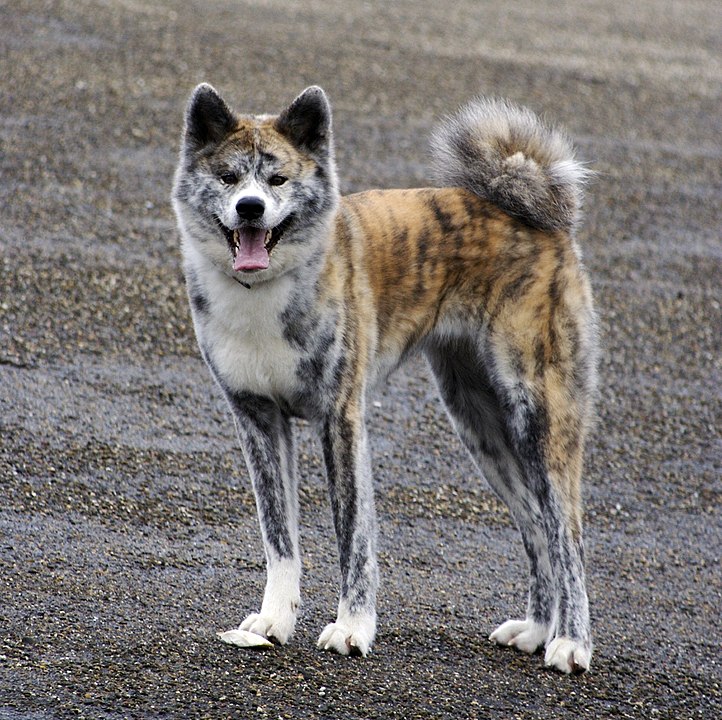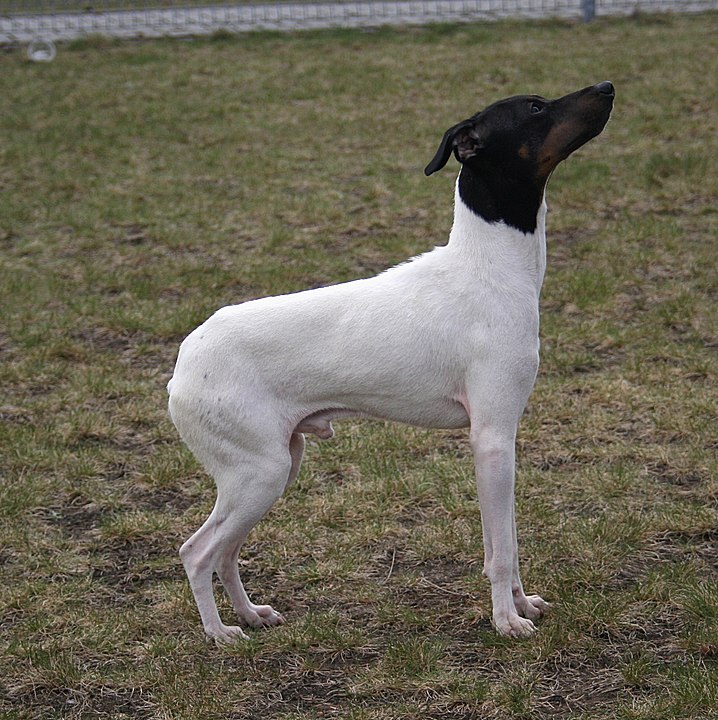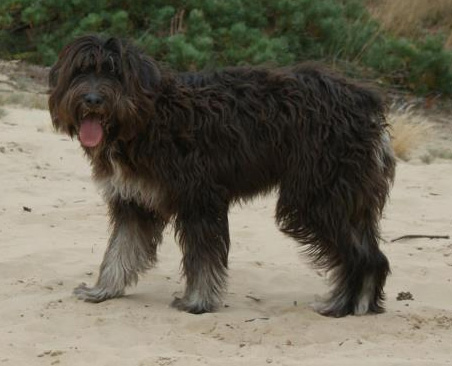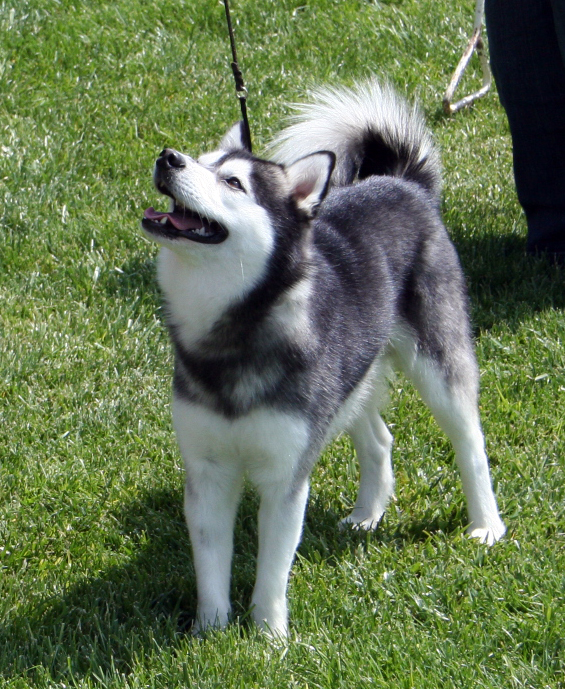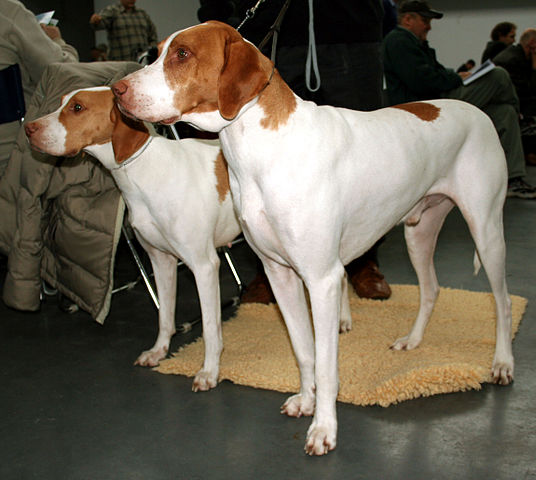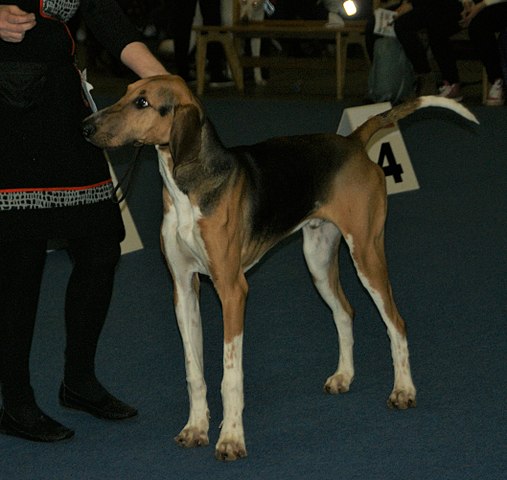The Ariegeois is a scenthound developed in 1912 and primarily used to hunt hare in the rocky French region of Ariege. He would drive the game towards the hunters, or would course and chase the game down himself. He was also used for tracking larger game like deer and boar. Like most pack hounds, this medium-sized fellow is good-natured both to other dogs and humans alike (including kids, although older kids are more compatible). While still capable of doing this job today, he also can make a friendly companion in the right home. This said, admirers of the breed may have a hard time finding a puppy – this is a fairly rare breed not often seen outside of France.
The smooth, low-shedding coat of the Ariegeois is always white with black markings (usually in patches although occasionally mottled). Tan markings may or may not be included. The coat is very easy to care for and requires only basic maintenance to keep clean and healthy. An owner of one of these hounds will trade ease of grooming for more difficult exercise requirements as they require lots of time to run, move and stretch their legs on a regular basis. At a bare minimum, they should be exercised at least an hour a day! When given enough exercise, they are generally low energy in the home and content to lounge around on the couch. Without this exercise… they are much more hyper and hard to live with.
The Ariegeois is an intelligent dog that is very capable of being trained. Naturally docile and easy-going, he may be a little slower to execute the commands than some breeds but is definitely capable. Although a bit of willfulness does exist, along with a penchant for getting distracted around interesting smells, many of them are extremely devoted to their owners and enjoy learning new things. In fact, his brain needs to be exercised just as much as his body so obedience training is definitely recommended! Bored hounds can become destructive, therefore training along with regular exercise and a given job to do are all paramount for a hound that is easy to live with.
An Ariegeois can be a somewhat loud dog, both in terms of “quality of voice” (they have impressive voice boxes) as well as “quantity of voice” (they enjoys hearing themselves howl). Like many scenthounds, they are better housed in places without close neighbors! Furthermore, although their howls may deter some intruders, their overly friendly natures means they do not make effective guard dogs. While some are at-first reserved around strangers, most quickly warm up to new people. Aggression is not really seen in this breed. Mostly, they want to be with their owners where they can give and get attention throughout the day. It should be added that they don’t do well when kept at home alone all day. Don’t obtain this breed if you work all the time and aren’t able to spend enough quality time with your dog!
The Ariegeois does have a strong prey drive to chase small animals, although often can live with indoor cats as long as he was raised with them. Furthermore there is almost never a problem with other dogs so multi-dog families are easy! The breed was used in large packs to hunt (often hunting with dozens of other hounds) and any hound that couldn’t get along with others would almost certainly “not make the cut”. Make sure to watch him around strange dogs that might not be as social around him, and also keep him on leash and unable to chase wild animals that he may see on walks – because he will chase them! This is especially prudent because the breed was built for running – meaning he is very fast and has lots of stamina and endurance. Better to be safe than sorry and risk him getting accidentally hit by a car while running after a squirrel!
When not socialized properly, the Ariegeois can tend toward being excessively timid so it’s extremely important to get him out into the world while still a puppy. The younger weeks (between 8-16 weeks) are the time to expose him to all sorts of people, places and situations so that he can grow up to be confident! When done right, he is just as happy out in the world as he is in his own home.

Photo By Bautt

![By rejohnson71 [2] - FlickR [1], CC BY-SA 2.0, https://commons.wikimedia.org/w/index.php?curid=4945199](https://academichound.com/wp-content/uploads/2021/03/Mi-Ki.jpg)


